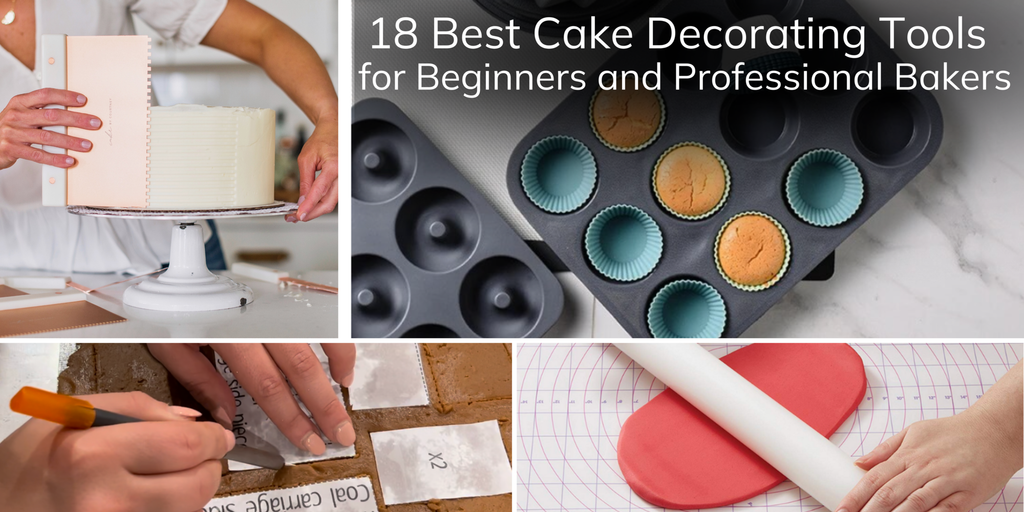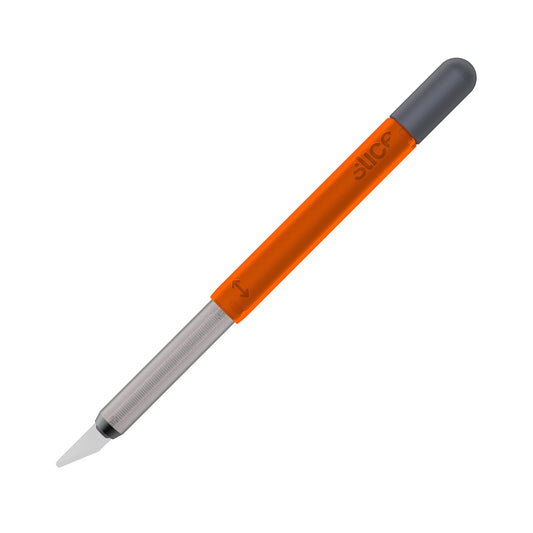Best Cake Decorating Tools for Beginners and Professional Bakers

Believe it or not, cake decorating is making a comeback (Or did it ever really go away?). The past few years' events have opened us up to new hobbies and experiences. While most might pursue cake decorating as a hobby, some folks turn it into a legitimate, money-making business.
To start your journey, you need cake decorating tools. There are must-haves that every baker should have, whether they’re a novice or a seasoned pro. As always, looking for specific characteristics before purchasing these implements is essential.
Below, we’ll dive into the best cake decorating tools, what they are, what they’re made of, and more.
Steps to Take before Decorating your Cake
Your excitement might make you want to jump right in the cake decorating pool with both feet, but first, you must prepare. Firstly, ensure you have the perfect pan and that it’s prepped. You can coat it with shortening or flour, then add parchment, grease, and a final coat of flour to seal the deal. Secondly, you can ensure your layers turn out flat by adding batter to a pan and smacking it against the countertop to see if it spreads evenly.
After your cake’s out of the oven, remove any loose crumbs to ensure the frosting sticks. Then, keep your surface plate or turntable stand clean by sliding waxed paper underneath your cake. You can remove it once you’re finished decorating. Next, after baking your cake, apply a thin layer of a “crumb coat,” or frosting, to catch any stray crumbs. That way, they’ll stay trapped in that initial frosting layer.
Of course, you want to brainstorm your designs ahead of time. Be sure to collect any equipment for cake decorating, which we’ll discuss below.
Types of Cake Decoration
While there is countless cake decorating techniques on the market, there’s a handful that every baker and pastry chef needs to know. They are as follows: spatula icing (adding icing to a cake with a spatula), piping (which requires a silicone piping bag), fondant work, hand painting, sugar work, mirror glaze, and airbrushing.
What Tools you Need for Cake Decorating
Here are the list of must-have tools:
- Fondant Cutter
- Cake Scraper
- Fondant Rolling Pin
- Fondant Imprint Mat
- Fondant Decorator Brush
- Crimpers
- Fondant and Gum Paste Carving Tools
- Palette Knife
- Turntable Stand
- Cake Tins
- Icing Comb
- Cake Lifter
- Parchment Paper
- Paint Brushes
- Silicone Piping Bag
- Cake Boards
- Baking Cup Mold
- Acetate Sheet
1. Fondant Cutter

A fondant cutter is a tool in cake decorating used to slice through fondant without messing it up, maintaining the integrity of your creation. You can also create intricate designs with a fondant cutter. The Slice® Craft Knife is the ideal implement for all your fondant needs. It boasts a slim, pen-like design that makes it easy to wield, while the textured grip ensures you have control over it.
In addition, the ceramic blade makes precise cuts and is suitable for creating delicate shapes, such as spirals, scrollwork, lace fondant, a quilted design, and more.
2. Cake Scraper

Cake decorating scrapers are a must for giving your creation sharp, clean edges. You can also use them to add smooth and soft edges to your cake. Materials-wise, they come in acrylic, plastic, and stainless steel. Metal scrapers are the most durable and resistant to wear. When hunting for a cake decorating scraper, keep your eyes peeled for sturdy, long-lasting scrapers that won’t leave faint lines or air bubbles while in use.
In addition to smoothing cakes, these scrapers can chop fruits and veggies, lift pie dough, mash ingredients, cut dough, and scrap surfaces.
3. Fondant Rolling Pin

The fondant rolling pin is comparable to a regular rolling pin but for fondant. It helps you roll out fondant evenly and smoothly with equal thickness. They’re usually made of plastic, acrylic, and stainless steel. What size and style you purchase depend on the kinds of cake you bake. However, you certainly want one durable and evenly weighted, so it’s easy for you to roll your fondant. Some even have an embossed design that transfers to your fondant when applied.
4. Fondant Imprint Mat

These beauties make the fondant decorating process significantly easier, especially if you don’t have time to create an intricate design from scratch. They’re usually composed of silicone. All you have to do is roll out your fondant evenly, then place it on an imprint mat. Then, roll your fondant again. The applied pressure will imprint the design on the mat onto your fondant.
In addition to fondant design, you can use these imprint mats for pottery.
5. Fondant Decorator Brush

Fondant decorating brushes are a cake artist’s best friend. Much like painting and makeup brushes, you can find them in various shapes and sizes and of varying thicknesses. They allow you to spread pearl and petal dust, blend colors, and paint on fondant or gum paste. You can also create outlines and delicate patterns. Of course, the types of brushes you should buy depend on your fondant needs.
6. Crimpers

Crimping tools or pastry clips are popular in the baking world. You may have heard about a pastry crimper used for pie crusts. You can also use a crimper on fondant. Crimpers come in different styles depending on what you need to do, but for fondant, they resemble clamps. They’re usually made of stainless steel and plastic. Using the crimpers on fondant is another way to add details and fun designs to your confectionary treats.
7. Fondant and Gum Paste Carving Tools

For the newbies, fondant boasts a type of gelatin that helps it maintain elasticity. Gum paste has Gum-Tex powder that makes it stronger. Now that we have that out of the way, you’ll find that fondant and gum paste carving tools will take your cake decoration to the next level. You can use them to sculpt, carve, shape, mold, and add detailing to your fondant.
If you purchase them in a set, you’ll find items like a quilted cutting wheel, a bone tool, a veining tool, a ball tool, and a stitching tool. They’re typically composed of metal and plastic. You’ll want tools with blades resistant to rust and dullness and a sturdy grip so you can decorate with a steady hand.
8. Palette Knife

You can use a cake palette knife to create a textured paint effect on your fondant. Your cake will look like a work of art. In addition, you can utilize one to spread frosting on a cake and employ a sculpting technique. The blades are usually stainless steel, while handle types range from wooden and plastic to stainless steel. Besides cakes, palette knives are used by painters and artists.
When on the hunt for a cake palette knife, ensure you find a durable blade that doesn’t rust and a handle that sits comfortably in your hand.
9. Turntable Stand

Think of a turntable stand like a Lazy Susan for cakes. It’s not only great for aesthetics, but with a turntable, you can spin the cake to view it from every angle without moving around it yourself. Plus, it keeps the cake elevated and safe from potential cake-destroying catastrophes.
They’re typically made of aluminum, plastic, and glass. Invest in a turntable stand that boasts a locking mechanism in case you need it to stay in place while you decorate. Also, consider any height and size requirements depending on your kitchen space and workload.
10. Cake Tins

Cake tins are an invaluable tool in every baker’s arsenal, whether you’re a beginner or a seasoned pro. They’re pretty self-explanatory. There are different types of cake tins, including the following: loaf pan, muffin pan, bundt cake tin, tart pan, cake tin, and heart-shaped tin. The cake tin allows you to bake individual cakes of various shapes and sizes.
Additionally, there is a wide range of cake tin materials – aluminum, stainless steel, non-stick, and silicon. We recommend you find one that best suits the type and size of cake you’re baking.
11. Icing Comb

This cake Implement boasts teeth that make designs in frosting. Some are made of plastic, but most icing combs are composed of aluminum. They create sharp, clean ridges in your frosting. Be wary of the aluminum comb, as it was sharper edges; however, it leaves a cleaner finished product than plastic combs.
12. Cake Lifter

Essentially, a cake lifter does what it says in the name: lifts cakes. It’s perfect for efficiently transporting a cake without worrying about it slipping out of your hands or accidentally messing up its design. It looks like a giant spatula. Besides lifting cake, it transports cookies, pizza, and sandwiches.
Additionally, cake decorating lifters are adept at organizing ingredients for dinner, such as scooping up chopped veggies. Cake deco lifters are usually made of stainless steel. You’ll want one resistant to rust and grease while durable enough for years of use.
13. Parchment Paper

Parchment paper is excellent for ensuring your cake is on a nonsticky, grease-resistant surface. It helps your creation stay intact and sticky-free, without residue left after removal. Parchment paper is a cellulose-based composite.
As for what to look for, we recommend investing in parchment paper that’s resistant to wear and tear and can withstand temperatures beyond 400 degrees. You’ll also want something thicker and heavy-duty, especially if you bake often.
14. Paint Brushes

Like a fondant decorator brush, you can use standard paint brushes to apply frosting, paint on fondant and gum paste, spread pearl and petal dust, and blend colors. There are myriad brush shapes, thicknesses, and bristle types to suit your cake-decorating needs.
15. Silicone Piping Bag

Silicone piping bags (also known as pastry bags) are used for applying icing on cakes as decoration. They’re shaped like cones and taper off with a hole at the point. Piping bags are made of cloth, paper, nylon, plastic, and silicone. We recommend a silicone piping bag. You want a reusable, sturdy bag, preferably a collection of different sizes. In addition, consider one with various metal tips for different decorating styles.
Besides producing cake icing, silicone piping bags are great for making cream puffs, adding the swirl to deviled eggs, constructing savory macarons, and more.
16. Cake Boards

Cake boards are simple in function, but they come in handy when you’re a cake-decorating boss. They’re thick materials used to support cakes and facilitate their transportation. Pretty simple, right? Different cake boards include cake pads, dessert boards, cake drums, and cake circles. Cake boards are typically composed of laminated cardboard, melamine-coated wood, corrugated cardboard, foam, and masonite.
When on the hunt for the optimal cake board, look for terms like “freezer safe,” “grease-resistant,” “recyclable,” and “uncoated.”
17. Baking Cup Mold

Baking cup molds are an asset for bakers everywhere. They’re non-sticky food-grade silicone molds. These molds are soft, unlike the rigid harshness of the molds in metal pans. They can withstand head up to 464 degrees Fahrenheit. Additionally, these smaller molds fare better than large cake pans because they provide better protection for what you’re baking. You won’t need to worry about bending or cracking cupcakes or muffins that are fresh from the oven.
18. Acetate Sheet

Acetate sheet is a clear plastic used by bakers. It’s more than your average plastic wrap – acetate sheet is reusable, bendable, and acid-free. It’s great for wrapping your dessert, giving a sheen to tempered chocolate, and creating thin chocolate bands that circle cakes. In addition, you can use acetate sheet to mold cakes and desserts into cylinders. It helps your creations look like a million dollars.

